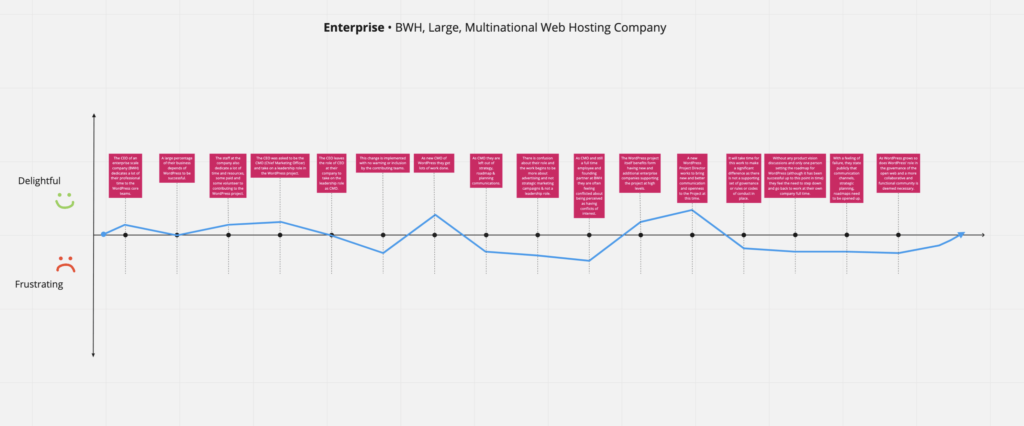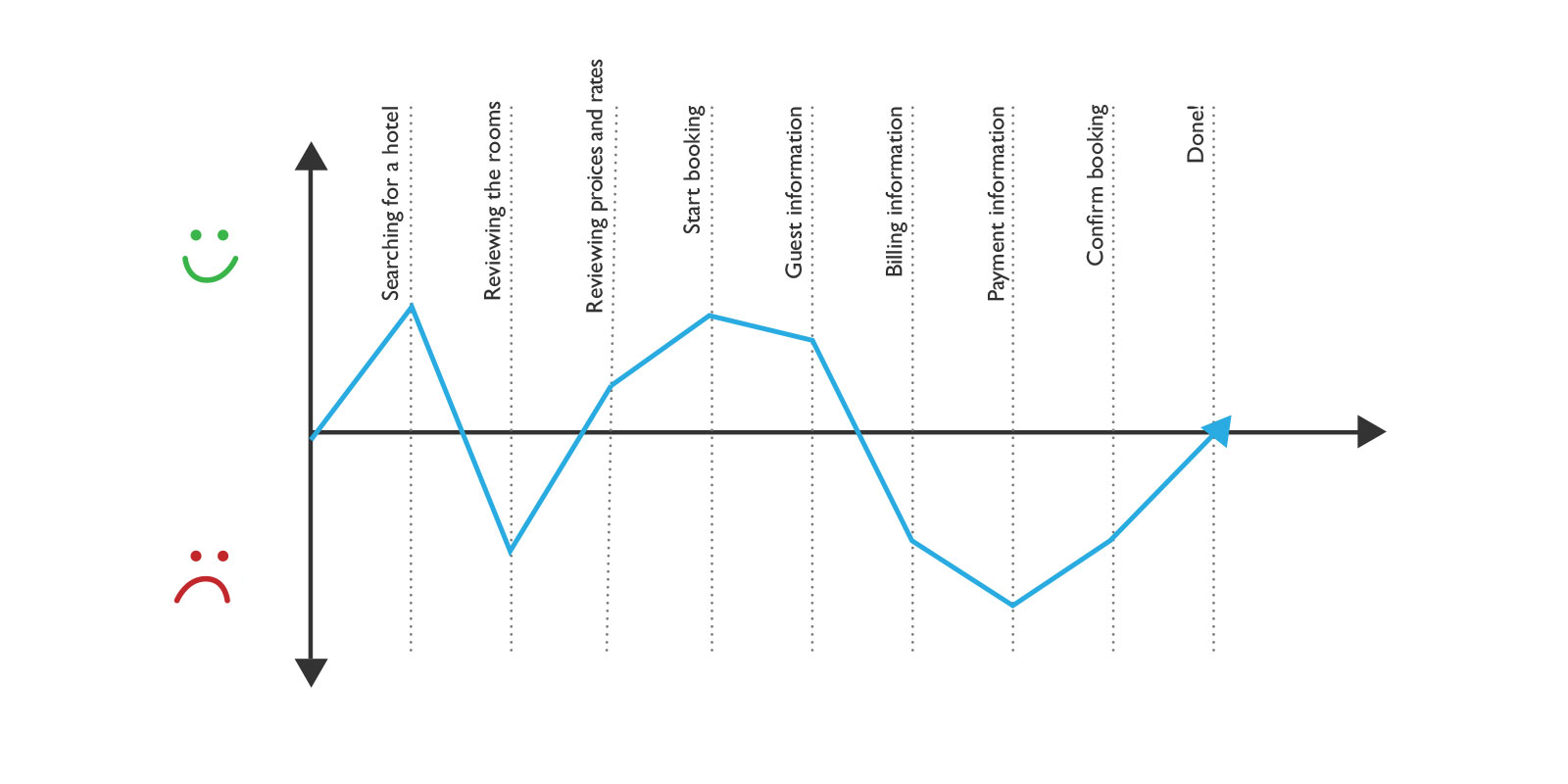A journey map is a visual diagram or visualization we use to document the steps a person goes through to accomplish a task or goal. This is a qualitative research exercise and we use it to unlock insights and opportunities to improve user experiences. We can visually identify the specific frustrating touch points and isolate friction for our teams.
Mapping is useful for teams for many reasons but they are uniquely impactful when they support an underlying business goal. A few examples of business goals could be:
- Identify and assign key touchpoints in a customer’s experiences to internal teams who may not be aware of important opportunities to both own and improve customer experience.
- Shift the company perspective to a more user-centric approach. Journey mapping sheds light on real human experiences that often organizations have little understanding about, especially when we consider the user’s environments.
- Help teams focus in on specific personas or customers for the purpose of unlocking new types of customers or for prioritizing a high-value persona.
- Simply highlighting specific areas of friction can unlock the first steps in a larger plan of action.
Foremost, journey maps are fundamentally useful for drilling down into experiences. For gaining the understanding of specific patterns where users get frustrated using a product, tool, or interface. They become physical evidence for teams to take action with.
Anatomy of a journey map
There are a wide variety of formats used in the industry. I’ll break it down into the most useful and basic structure for us to start. A simple map can be sketched out on paper or mocked up easily in a design tool I like to use – Miro.

Most follow an underlying structure that includes a timeline left to right with a vertical axis that represents emotion. The higher up the axis the happier. The middle represents neutral experience and below the neutral line represents feeling frustrated.
As we map a specific person’s movement through accomplishing a task or series of tasks we can plot the points along the timeline and note the person’s experience as neutral, frustrating, or delightful.
This experience line captures the emotions or mindset of the experiences along the journey.
A single scenario or goal is featured in a individual journey map. These can include a persona from a use case or a customer. Journey mapping works the same for both users or customers.
Journeys are often categorized into phases of the tasks as well. Phase 1, phase 2, or phase 3 for example.
Most importantly are the takeaways we can synthesize. What are the insights and opportunities we can unlock as we visualize the user journey? It can be useful in complex mapping to actually label and number each step. Great suggestion for making it easier to reference the map in briefs or meeting notes.
We can isolate and iterate to drill down into specific cases of friction or opportunities and insights. We can pinpoint the areas of our user’s frustrations and begin to solve actual problems and provide tangible evidence of the work our teams should focus on. There are almost always many more sub-steps we need to reveal to our teams. It can help us to track performance and conversions as well. We usually have many more steps to measure and test with analytics and metrics too!
The artifact of the map itself becomes a wonderful way for our teams to communicate and to facilitate important conversations with. Ultimately, this work gets everyone on the product team aligned and working towards the same goals together. Both stakeholders and product teams can sleep better at night knowing we are solving the right problems and not simply adding feature bloat to our products.
This technique is equally valuable if teams are more simply looking for validation or to remove unnecessary complexities. Technology experiences are fluid and need evaluation periodically over time as we rethink and improve our products too.

This is a useful explainer video from Nielsen Norman Group. (World leaders in research-based user experience.)
Further reading or listening:
- Getting a Clue: Journey Mapping and the Rashomon Effect by Jared Spool
- Listen to an interview for the above article via the UIE podcast
- Journey mapping 101 by Sarah Gibbons
Remember this work is not about UI or about a page on a site, it is about a journey and requires a high quality understanding about our user and our user’s environment. This is just one tool. Mapping is an activity and the fidelity of the map can vary depending on what our goals are.
👉 The goal with mapping is to illuminate specific evidence of the actual steps that our users have to go through to accomplish tasks using our software.
Journey mapping is great for aligning product teams and stakeholders alike.
Are you looking to work with a small UX design team on a specific product or digital experience? Please reach out to me and our team at UXATT so we can support your needs.